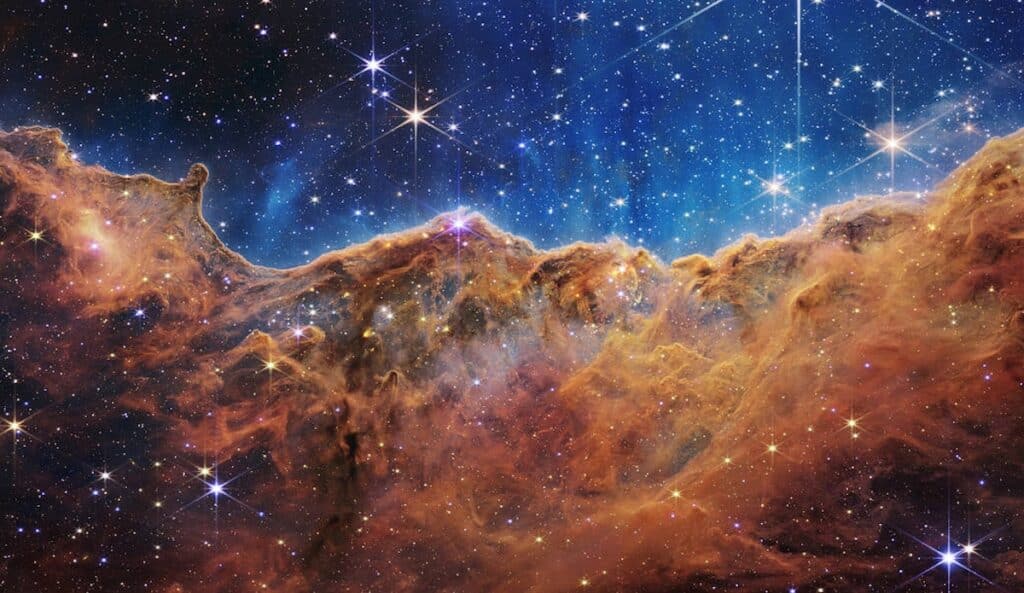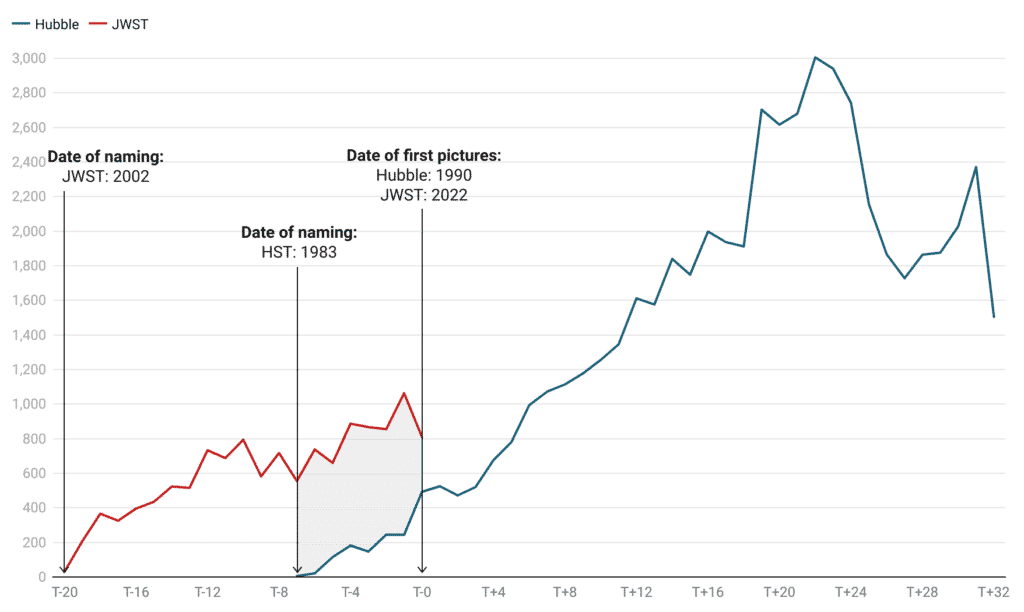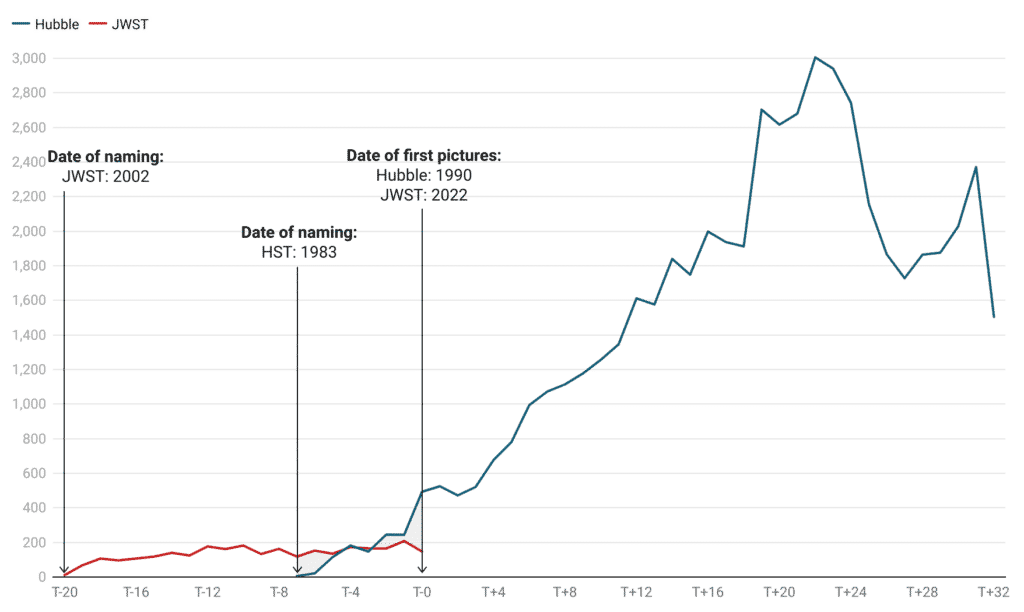Subscribe to our newsletter
Inspiring dreams: The new James Webb Space Telescope

Image credit: NASA, ESA, CSA, and STScI.
As children we look up to the beauty of the night sky and are inspired to dream. I recall as a small child being fascinated by my father’s books on astronomy and the beautiful pictures of now-familiar starscapes such as the Horsehead Nebula. That led me to join the astronomy club at school and spending nights in the cold, sleeping on the floor of the cricket pavilion, and waking up at the right time with other similarly nerdy teens, to peer up through a telescope lens to see if we could locate the moons of Jupiter. How many of today’s scientists (not just astronomers) are doing what they do in part due to some similar formative experience? A wonder about the universe and a desire to understand its mysteries.
A whole new generation of scientists may now have been inspired to dream and perhaps, one day, will pursue a career in research. The James Webb Space Telescope (JWST), launched at the end of last year, released its first images a week ago. While one does not need to be a scientist to find these shots breathtaking, it is humbling to think that we live in an age where “big science” events like this don’t just happen once in a lifetime, but every few years. Indeed, the pace of discovery is accelerating, powered by the engineering and technology that globally both the public and private research ecosystem is building.
It is said that familiarity breeds contempt, and perhaps a justifiable fear that the regularity of such advances may lead to a lack of anticipation or excitement, as happened with the US space program in the 1970s. But, as we will see below, at least in the global science community, JWST is already set to loom large in our collective psyches for some years to come and bring huge value to our lives in so many ways, as Professor Monica Grady from the Open University has so eloquently set out.
The idea of going beyond our atmosphere to look at the stars was first suggested by American theoretical physicist Lyman Spitzer in 1946. His ideas led to a number of orbital observatories – the American Orbiting Astronomical Observatory OAO-2 in 1968, the Soviet Orion 1 in 1971. This lineage eventually led to the most famous space telescope to date, Hubble. And it is Hubble that we want to use as a benchmark to compare the attention associated with JWST.
Riding off the back of the success of the moon landing, NASA put forward a paper in 1969 on the uses of a large space telescope, but it was not until 1977 that the ambitious project was funded. Six years later in 1983 the name Hubble was given to the project. While the terrible Challenger disaster of 1986 must have caused significant internal challenges at NASA, the project pressed on and Hubble was launched in 1990, with the first scientific paper being submitted on 1st October 1990.
In the subsequent 32 years, even with initial teething trouble, Hubble has not only gone on to profoundly advance our understanding of the universe in which we live – from helping to establish the existence of black holes, to detecting water vapour on Europa (one of those moons of Jupiter that I was searching for all those years ago) – but has also served as a platform for us to understand how to engineer devices that live in the vacuum of space.
When Hubble first returned results in 1990, I recall the media attention being massive. My perception is that this is similar today but when I looked at Dimensions, I was shocked to see that there were already almost 15,000 papers citing the JWST! I couldn’t help but wonder if JWST is already more famous than Hubble.

It seems, at first glance, that the JWST is receiving significantly more attention than Hubble at the same point in its existence. One might speculate as to the reasons for this – perhaps being named relatively further in advance of launch than Hubble, or the controversy over the choice of name might have increased the attention to the telescope. However, the growth of research over the intervening years is not negligible (indeed, Hubble has played an important role in the growth in astronomical and space science).
The area of Astronomy and Space Science (ANZSRC FoR 0201) has grown significantly in the last 30 years and much of that growth comes from the advances made possible by Hubble itself. Using the ANZSRC FoR (Field of Research) definition of the field, Dimensions suggests that there were around 6,600 papers, conference proceedings, pre-prints, monographs and edited books produced in the 1983, whereas in 2021, there were around 33,600 such outputs – a five-fold increase. (Book chapters are specifically removed from all the analyses here to remove peaks from astronomical encyclopaedia publications that skew specific years.)

Figure 2 shows the result of a simple approach to rebase the JWST attention, to account for the difference in time periods during which the attention was received. In this case, we looked at the growth in Astrophysics using the ANZSRC FoR Code definition of 0201 Astronomical and Space Science to create an inflation rate for the field from 1983 (T-20) to present day. We then divided the JWST output number by the compound inflation rate year on year for each year from T-7 up to T-0.
Normalisation, however, must be taken with real care. There is one further edge effect that means that we cannot trust the T-0 JWST line. Since 2022 (T-0 for the red line) is the current year, it is incomplete and hence cannot be compared to a full year. You can see the same effect in the dip in T+32 (2022 for the blue Hubble line). Thus, while 2022 looks to be a disappointing year for JWST, it is because the comparison is between a partial year with a full year. This will, I’m sure, be an amazing year for JWST publications, which are set for lift off in the coming years, if the example set by Hubble is followed.
Subjectively, it is often easy to recall the golden days of the past and how wonderful things were. However, in this case, we can see that the level of excitement, as measured through research publications, of the JWST compared with the launch of the Hubble is entirely comparable. Not only this, thanks to Hubble this excitement has been sustained over the last 20 years.
We at Digital Science wish the JWST team at NASA and around the world the very best for their coming data releases. This is the stuff of which dreams, and future scientists, are made.
About Dimensions
Part of Digital Science, Dimensions is a modern, innovative, linked research data infrastructure and tool, re-imagining discovery and access to research: grants, publications, citations, clinical trials, patents and policy documents in one place. www.dimensions.ai

About the Author
Daniel Hook, CEO | Digital Science
Daniel Hook is CEO of Digital Science, co-founder of Symplectic, a research information management provider, and of the Research on Research Institute (RoRI). A theoretical physicist by training, he continues to do research in his spare time, with visiting positions at Imperial College London and Washington University in St Louis.
